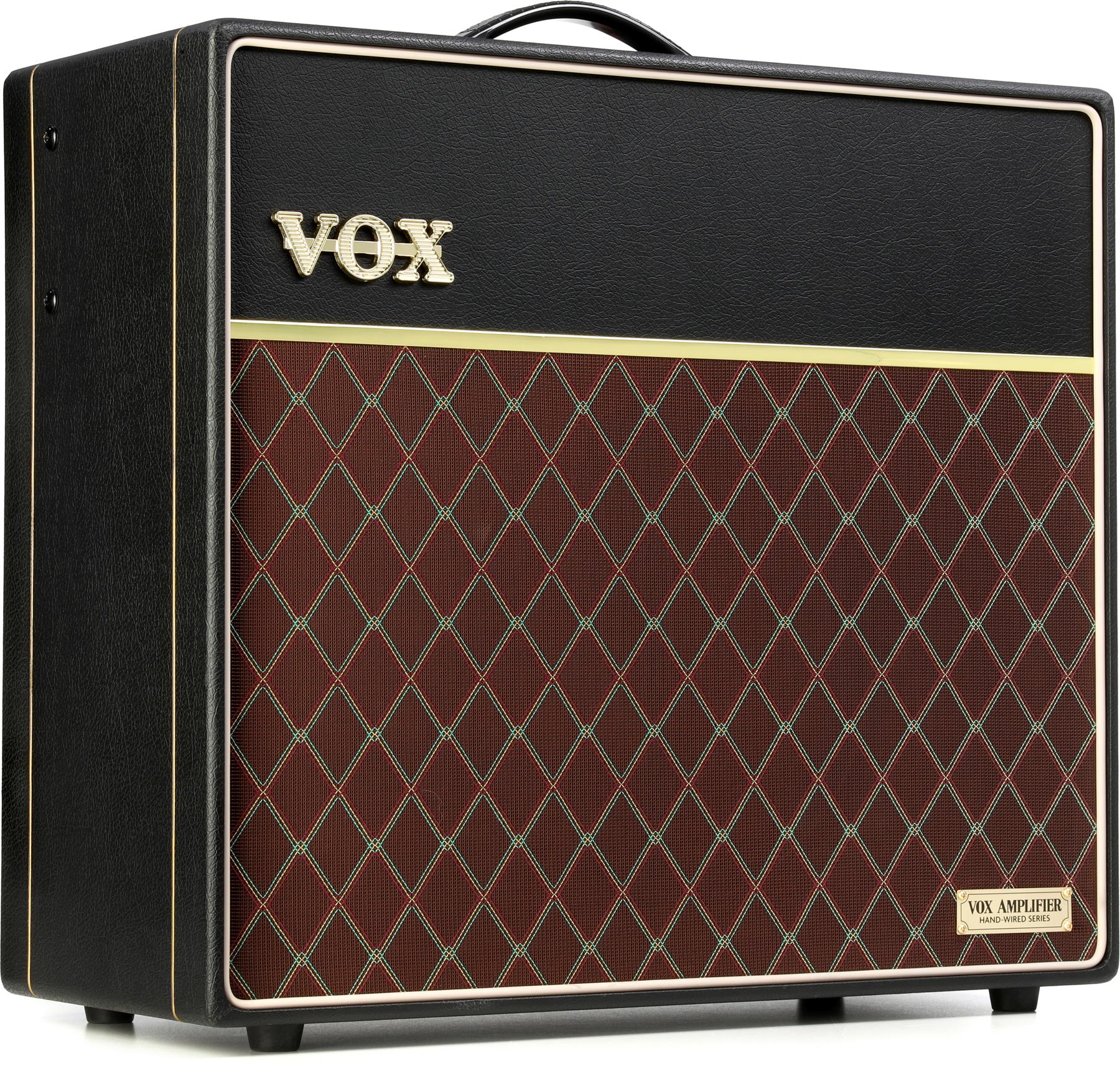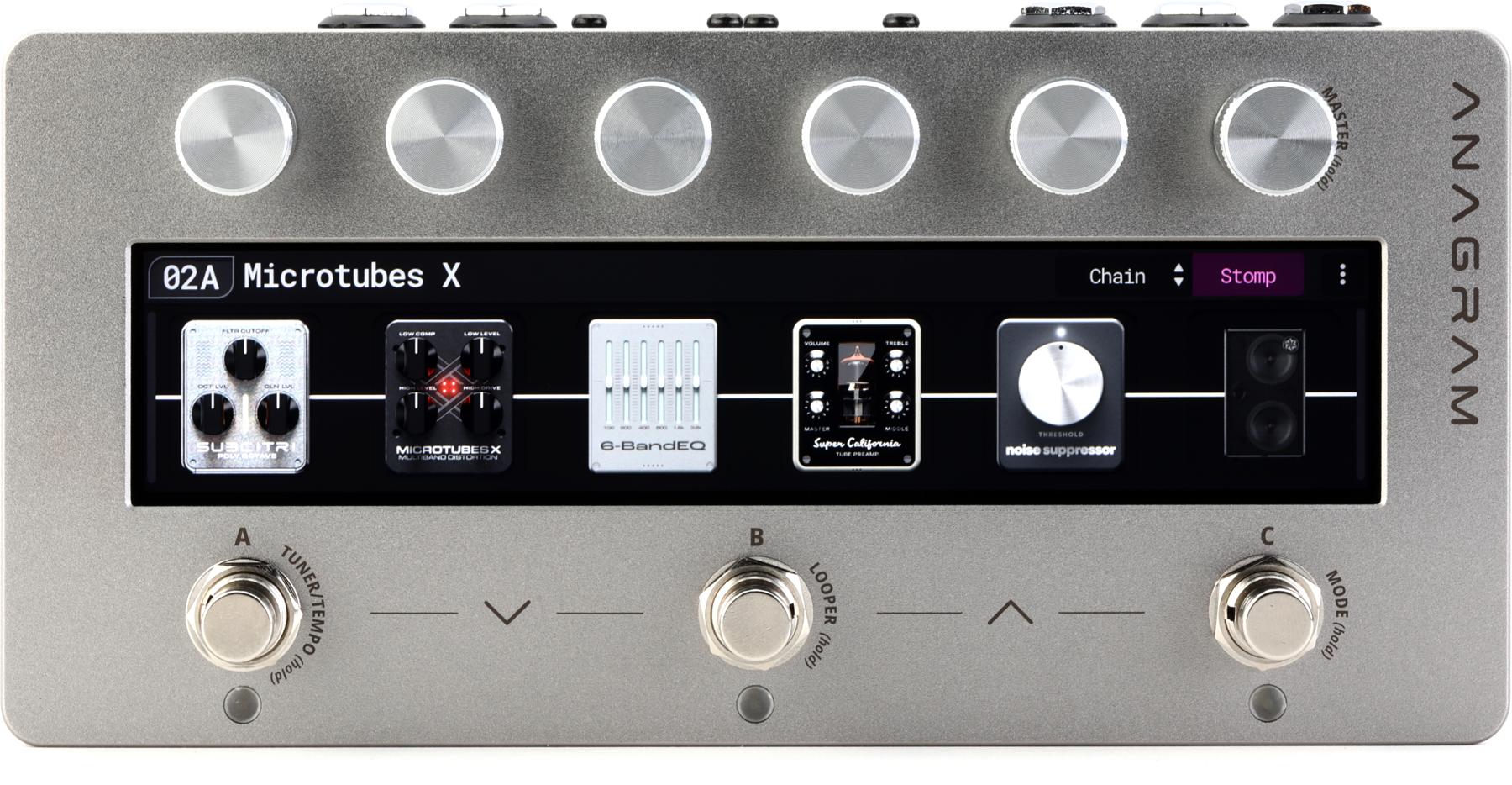Resistance to digital amps might just be futile at this point. Many tunes you hear—and an increasing number of live gigs—feature a bit of faux-tube tone somewhere in the mix. But while the sound of pro-level modelers can be nearly indistinguishable from their analog counterparts in a mix, the feel and simplicity of a real amplifiers remain appealing and even indispensable to many players. That said, modelers that make usability, convenience, and price priorities can convince even die-hard tube users to see what’s on the other side of the fence. IK Multimedia’s TONEX ONE is one modeling device that might make the cut. It’s likely the smallest, most portable modeler out there. And at $179, it’s easily the most affordable.
Big Tones, Tiny Controls
The TONEX ONE isn’t designed to put a million different options at your feet, and that economy may be the unit’s strongest feature. It features several different modes, but the primary operating mode allows you to either switch between two different models, or simply use the unit as a stompbox. Each model can be an amp, an amp and cab, a pedal, or a pedal driving an amp and cab. Judging by how deep the online repository tone.net is for user-created presets, the options are nearly endless, which speaks to the already sizable user base. It’s a little strange to consider a modeler in a package this small with so few controls. There’s a large main knob that controls volume and gain (when you’re in ALT mode), and above that are three illuminated mini knobs that control the 3-band EQ, gate, compression, and reverb. You can also plug your headphones directly into the pedal, which makes it a dynamite silent practice amp.
My experience with modelers is that high-gain tones and clean tones are relatively easy to achieve and typically very good. After unboxing the TONEX ONE, I loaded up a slightly dirty Vox-style amp to evaluate the edge-of-breakup tones. I paired the pedal with humbuckers (with a coil split option), Stratocaster single coils, and P-90s in a T-style solidbody. With each one, the Vox-style amp was punchy and clear but could also range to very nice higher-gain sounds. Naturally, each version of a modeled amp offers different gain structures, so it pays to experiment. Combining the humbuckers in a PRS SE DGT with a few hot-rodded Marshall emulations and the growl offered tones nearly as good as those from much more expensive modelers. In a blind test, I’m not sure I could hear—or feel—much of a difference. As I explored further and fine-tuned things a bit more, the ToneX One felt more alive in my hand,s and sounded much less shrill in the top end than other digital solutions I’ve encountered.
One of the most obvious tone fixers in a modeler—and maybe one of the most underutilized—is the EQ section, and kudos are due to IK for placing those controls at the fore. Being able to adjust the most immediate tone-shaping options without having to dig through menus or touchscreens is a pleasure.
There are many possible uses for the TONEX ONE. It can serve as a high-quality direct solution on your pedalboard, a portable recording interface, and a plug-and-play practice solution when high volume is a no-go. One handy setup I tried was disabling the cabinet emulation in the pedal and then plugging into the effects return of a combo amp, in this case, a Fender Hot Rod Deluxe. I immediately imagined many backline amp headaches being a thing of the past. You can always plug directly into a flat-response cabinet or PA system too.
Because it has such a small footprint and streamlined controls, harnessing the unit’s full potential, and accessing all the different modes, takes a bit of effort. You can store 20 different presets within the pedal and assign them to any of the three active slots (two for dual mode and one for stomp mode). And although doing this on the fly is handy, I found it much easier to program the presets via the easy-to-use desktop editor.
The Verdict
TONEX ONE benefits from a rather singular focus and its biggest advantage is that it’s not shrouded in unnecessary layers of tweakable options. You can simply load up a base sound or two, drop it at the end of your pedalboard, and go.The included software allows you create your own models and makes swapping presets easy. I did find the multitude of modes, and their color-coded indicators, a bit confusing at times, but IK’s documentation was very clear and got me through any trouble spots. The TONEX ONE would serve well to those who want to explore digital modeling but still hold on to their analog pedalboards, and at $179 it’s a steal.





















